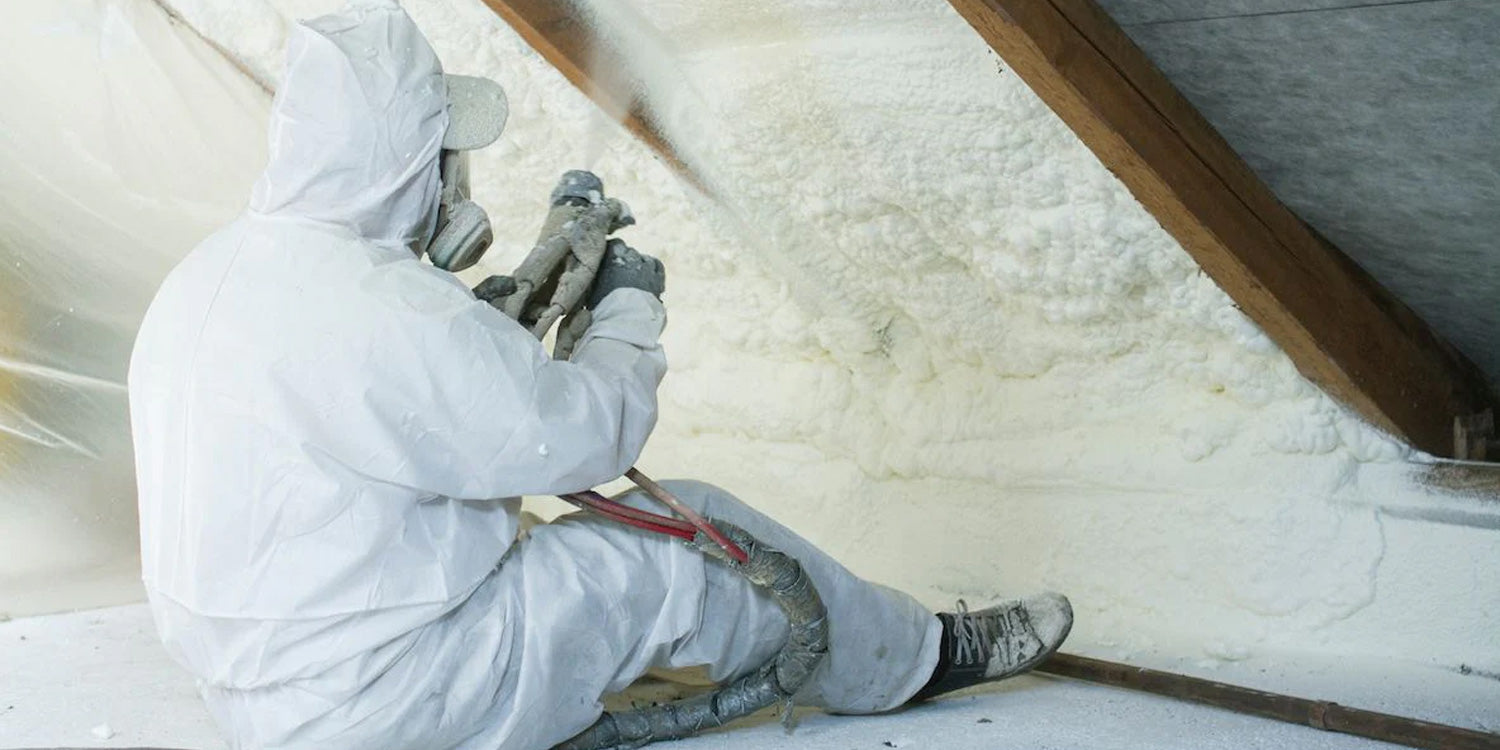Spray Foam Insulation Types Guide for Contractors
At PURspray, we know the contractors we work with see the value in delivering high-quality insulation to residential and commercial property owners alike. However, knowing which type to recommend in which situation can be tricky with the types of spray foam insulation available on the market.
Open-Cell Spray Foam Insulation
Open-cell spray foam insulation (also known as low-density SPF) offers a decent R-value and expands to fill all of the crannies as soon as it's sprayed. The option works well in tight spaces where we see problems getting equipment. However, depending on local regulations, this type of insulation may require a thicker application than closed-cell.
One of the significant downsides to open-cell spray foam insulation compared to the other types of spray foam insulation is that it is water permeable. Therefore, open-cell should not be used below ground and may pose difficulties if there is a leak, as water may collect.
This foam insulation is generally made from polyurethane, and standard air fills the pockets in the foam. This feature is part of what makes the insulation so light once applied. Open-cell spray foam insulation has a spongy texture.
Closed-Cell Spray Foam Insulation
Closed-cell spray foam insulation (also known as medium-density SPF) is the more common of the two types of spray foam, and it also provides higher R-values for customers. This option is fantastic for exterior walls and attics. However, this type of spray foam insulation often requires six inches of thickness, which contractors must consider.
There are numerous benefits to using closed-cell spray foam insulation, beginning with the structure of the foam itself. The rigid nature of the foam, once it sets up, can help support the wall. Additionally, since each part of the insulation is closed, the insulation resists water.
The downside of this type of spray foam insulation is generally the cost compared to open-cell. Additionally, older-style closed-cell used CFCs and HCFCs, which still affect the environmental friendliness in consumers' perception. Depending on the home and local regulations, the density of this product could also be an issue.
Choosing Different Types of Spray Foam Insulation
Today, we see many more closed-cell spray foam insulation installations than open-cell. Of the types of spray foam insulation, it offers a higher R-value and water resistance. These features make it the option we recommend for large-scale applications.
Open-cell spray foam insulation does still have a place, however. For tight spaces and other hard-to-reach areas, open-cell insulation is sufficient to minimize heat loss. Additionally, how open-cell expands fills in nooks and crannies that are often difficult to fill with closed-cell also warrants its use.
PURspray offers innovative equipment and professional advice for insulation contractors, no matter how long they’ve been in business. We understand the complexity of any size project and the best options within Canada to get it done efficiently.
Request your quote with PURspray today to learn more about what equipment you need - at payment options that work for your business.



